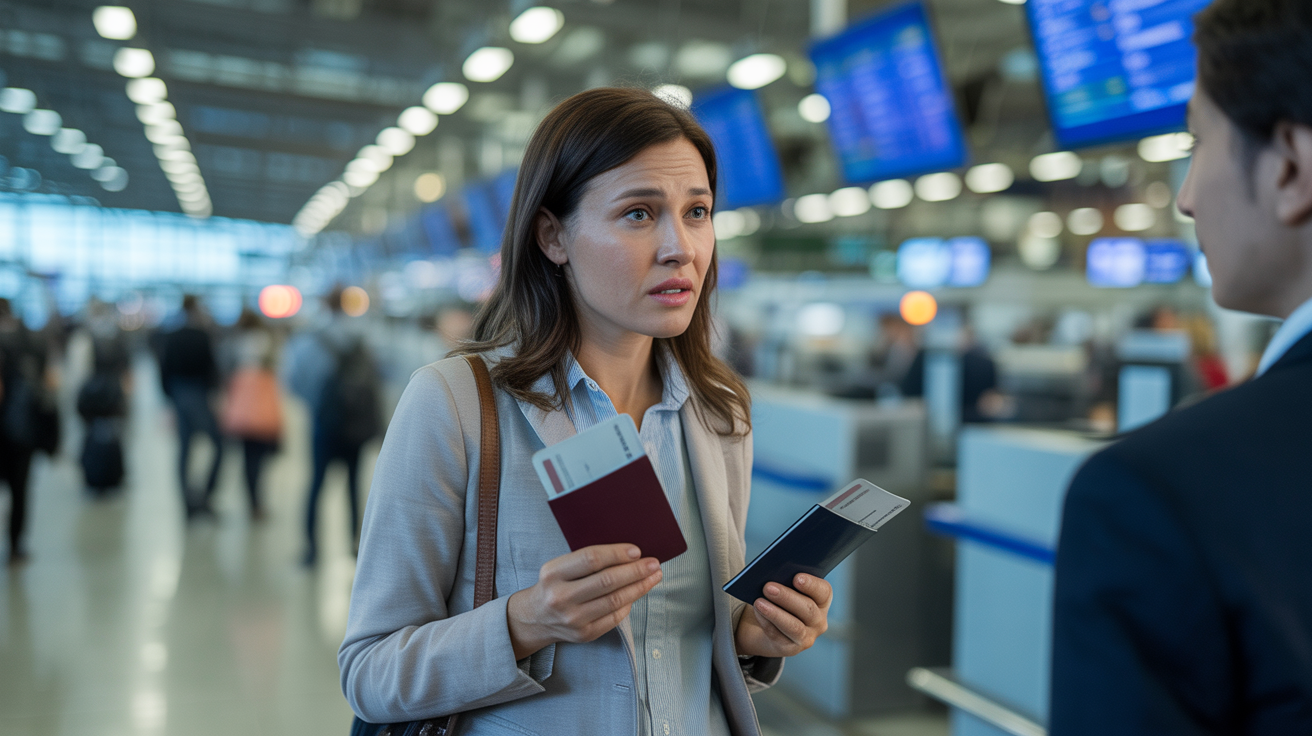You’re standing at the airline counter. Both passports are in your hand. The agent is waiting. Your brain freezes. Which one? WHICH ONE?
If you hold two passports, you’ve definitely had this moment. Even experienced dual citizens get turned around the first few times. But here’s the thing: it’s actually simple once you get the pattern down.
Here’s the rule that clears up everything: You always leave a country as its citizen, and you always arrive in a country as its citizen.
That’s it. One rule. Think of it like speaking two languages. You don’t mix Spanish and French in the same sentence. You switch completely depending on who you’re talking to.
Let’s break it down step by step so you never have to guess again.
Step 1: Checking In for Your Flight
When you check in for your flight, the airline needs to make sure you’re allowed to enter your destination. That’s when you show the passport for the country you’re going to.
Why? Because that proves to the airline that you have the legal right to enter when you land—no visa required, no return ticket needed. Airlines can get fined if they let passengers board without the proper entry documents, so they check first.
Pro move: Have this passport ready before you even get to the counter. It shows you know what you’re doing.
Step 2: Exiting the Country You’re Leaving
Once you head toward security and passport control, you’ll switch to your passport from the country you’re leaving.
That’s the passport the airport officials expect to see, because you’re still in their country. As far as they’re concerned, you’re one of their citizens departing on an international flight.
Note: The United States doesn’t have formal exit immigration controls—you’ll simply show your U.S. passport to the airline and TSA when departing. Most other countries do have exit controls, where border officials stamp your passport as you leave.
Step 3: On the Plane
You’re between countries now. Put away the passport you just used to leave and take out the one for your destination. Have it ready for arrival.
This is your moment to get organized. No one’s watching. No one’s judging. Just make the swap.
Step 4: Arriving at Your Destination
When you land, present the passport for the country you’re arriving in. That tells border officers you’re one of their citizens and have the right to enter—no questions about visas or length of stay.
Think of it like having two gym memberships. You scan your card at the gym you’re actually at. Same logic.
The Simple Rule to Remember
Here’s the entire system in one sentence:
Leave as a citizen of the country you’re leaving. Arrive as a citizen of the country you’re arriving in.
Let’s say you’re flying from New York to London as a dual US-UK citizen.
- JFK Check-in: Use your British passport.
- TSA/Security: Back to American mode.
- Mid-Atlantic: Swap passports in your bag.
- Heathrow Arrival: British passport, like you never left.
On the way back, just flip the script.
Common Questions
Q: Must I show both passports together? No—only show one at a time. Each border official only needs to see the passport relevant to their country.
Q: What if I forget one of my passports? Always travel with both. You need one to leave and one to enter.
Q: Is it illegal to carry two passports? Not at all. It’s expected for dual citizens. Just keep them safe and accessible.
Final Thoughts
This whole system feels complicated until it clicks. Then it’s like riding a bike. You just know.
You’re always entering and exiting as a citizen of that country. You’re changing hats. You leave wearing one, land wearing the other.
Master this, and you’ll sail through immigration while everyone else is still digging through their bags.

